The Disassembly of SURF II
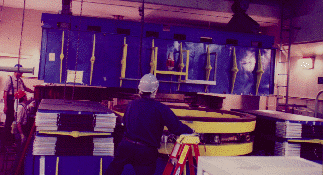
First, the upper yoke is removed to provide access to the coils and vacuum
chamber, which are shown in the next picture. The yoke assembly weighs
approximately 54,400 kg (60 ton) and was built in the 1940's.
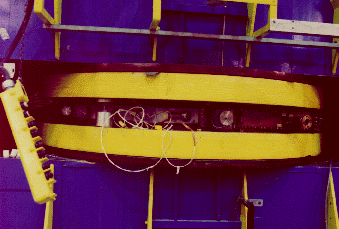
The main magnet coils (yellow pieces) and the vacuum chamber (metallic
structure between the coils) are removed while the upper yoke is moved aside.
(The yoke is not yet moved in this picture.) The coils are being replaced as
part of the upgrade, but the vacuum chamber will be modified and reused in
SURF III.
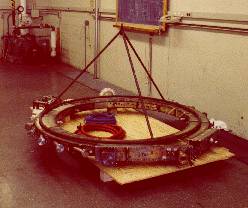
The stored electrons circulate in this vacuum chamber. Most of the current
chamber will be reused in SURF III, but one section will be replaced so
that two new photon beam ports can be installed. The cone-shaped device atop
the chamber is the lifting rig that supports the chamber from an overhead crane.
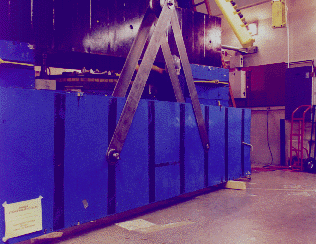
Each yoke assembly consists of ten packs, which weigh approximately
5,400 kg (6 ton) each. The packs are separated and individually
lifted down from the storage ring. Here, the first pack rests on the floor
before being moved out of the room.
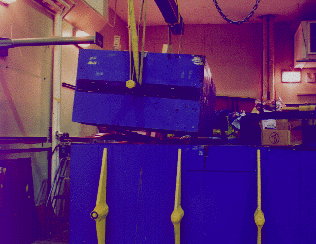
Once the upper yoke is removed, the back legs are taken out. Like the yokes,
each backleg consists of ten packs, but the backlegs are lifted as a single
unit instead of as individual packs. Each backleg weighs approximately
6,800 kg (7.5 ton).
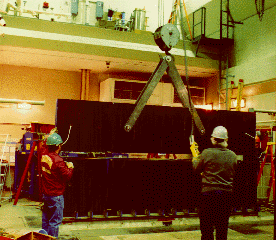
The final step in the disassembly of SURF II is the removal of the lower
yoke. Here, one lower yoke pack is being lifted away.

SURF II has been completely disassembled. All that remains is the network of
rails and supports that held the 145,000 kg (160 ton) accelerator
since it arrived at this site in 1968. This support bed, with some
refurbishment and minor modifications, will also support SURF III.
See the assembly of the lower yoke.
Rob Vest, SURF III, NIST
Online: May 1998 - Last Updated: June 19 2001







